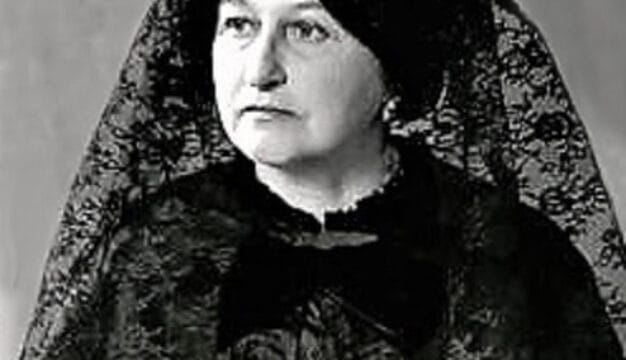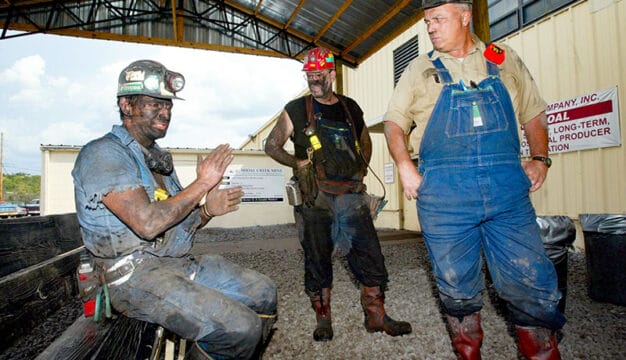Cathy O'Donnell
Ann Steely (1923-1970), later known as Cathy O’Donnell, was an Alabama-born motion picture and television actress best known for playing Catherine “Keechie” Mobley in the 1948 American crime film They Live by Night, in which she and actor Farley Granger portrayed an outlaw couple on the run. Her other notable films include the Oscar-winning films The Best Years of Our Lives (1946) and Ben-Hur (1959). Seven of her 17 theatrical motion picture roles were in the genre known as “film noir.” This term, meaning “dark movie,” was coined by French film critics of the 1950s to denote American crime thrillers notable for their shadowy visual style and pessimistic themes.
Ann Steely was born on July 6, 1923, in Siluria, a mill town in Shelby County that was annexed by Alabaster in 1971 and is now a neighborhood in the greater Birmingham metropolitan area. Her father, Henry Grady Steely, was a school teacher and local theater operator, and her mother, Ora Lecher Steely, was a homemaker. Ann attended elementary school in Greensboro, Hale County. Henry Steely died in 1935, when Ann was 12. Shortly thereafter, her mother moved with Anne and Anne’s younger brother Joe to Oklahoma City, Oklahoma.
There she attended Harding Junior High School and graduated from Classen High School in 1942. Between 1942 and 1943, Ann studied stenography at Hill’s Business College and drama at Oklahoma City University. Upon leaving school, she was hired as a secretary at the Oklahoma City Army induction center. But performing in student productions had given her a desire to pursue acting as a career, and in 1944, she moved to Los Angeles, California.
Like several other famous actresses of the day, Steely’s career was launched when she was “discovered” sitting at the lunch counter of Schwab’s drugstore by agent Ben Medford. He introduced her to film producer Samuel Goldwyn, who signed her to a contract with the Metro-Goldwyn-Mayer film studio. Goldwyn changed her name to Cathy O’Donnell, choosing “O’Donnell” because he said she looked Irish and “Cathy” after the heroine of her favorite novel, Emily Brontë’s Wuthering Heights. Claiming that her thick Alabama accent would be difficult for non-southern audiences to understand, Goldwyn arranged for her to undergo vocal training at the American Academy of Dramatic Arts. In 1945, the 22-year-old now Cathy O’Donnell made her film début in an uncredited role in Wonder Man, a comedy starring Danny Kaye.
O’Donnell’s second film role, and first major one, was in 1946 in the highly acclaimed The Best Years of Our Lives, directed by her future brother-in-law William Wyler. She played the role of Wilma Cameron, the high-school sweetheart of Navy veteran Homer Parrish, played by actual World War II veteran and double amputee Harold Russell. The film won seven Academy Awards, but O’Donnell was not among those nominated.
The following year, she played a leading role in the film noir Bury Me Dead, playing a suspect in the murder of her character’s older sister. In 1948, she co-starred in a supernatural film noir, The Amazing Mr. X, also known as The Spiritualist, in which she again played the sister to the other female lead.
The most significant and best-remembered role of her career was in 1949, when the studio loaned her out to its rival RKO for They Live by Night, the first film directed by Nicholas Ray. Co-written by Ray and Charles Schnee, the film was based on Edward Anderson’s Thieves Like Us, a 1937 novel somewhat inspired by the real-life outlaws Bonnie Parker and Clyde Barrow. Young actor Farley Granger, who had studied acting with O’Donnell and recommended her as his co-star, played Arthur “Bowie” Bowers, a wrongly convicted young man who escapes from a Mississippi prison farm with two veteran bank robbers. Injured, Bowie hides out at a gas station run by an associate of the criminals, where he meets and falls in love with O’Donnell’s character Keechie, the owner’s daughter. They flee and attempt to live an honest life, but, in a theme common to film noir, Bowie is unable to escape his past.
They Live by Night was filmed in 1948, but RKO had little confidence in it and released it on a limited basis only in the United Kingdom. When the film was highly praised in the British press, the studio released it in the United States in 1949. The film’s reputation grew over the years, particularly after it was embraced in the 1950s by critics at the French magazine Cahiers du Cinema. It is now considered a classic crime film, as well as a forerunner of the “troubled teen” genre introduced by Ray in 1955 with Rebel Without a Cause.
O’Donnell’s subsequent career included co-starring with Granger again in the 1950 film noir Side Street and supporting roles in the 1950 World War II drama The Miniver Story (a sequel to the 1942 Mrs. Miniver) and the 1951 police drama Detective Story. Her last film was the 1959 biblical drama Ben-Hur, which starred Charlton Heston. In it, she played the small but significant role of the title character’s sister, whose leprosy is cured miraculously.
The reason for the end of O’Donnell’s film career is not documented, but some of her friends, including Granger, claim that it was the result of her 1948 elopement with producer Robert Wyler, brother of director William Wyler. Wyler had left Samuel Goldwyn’s studio to form his own independent production company, allegedly enraging Goldwyn. Granger would later claim that Goldwyn terminated O’Donnell’s contract as soon as he learned of the marriage. After 1959, O’Donnell worked solely in television, with her last role being a 1964 episode of the Western series Bonanza.
O’Donnell died on April 11, 1970, at the age of 47 from a cancer-related cerebral hemorrhage and was interred at Forest Lawn Memorial Park, Glendale, California.
Additional Resources
Granger, Farley, and Robert Calhoun. Include Me Out: My Life from Goldwyn to Broadway. New York: Macmillan, 2008.
Story, David M. “Dream a Little Dream.” 405 Magazine, June 2012. http://www.405magazine.com/June-2012/Dream-a-Little-Dream/.
Vieira, Mark A. Into the Dark: The Hidden World of Film Noir, 1941-1950. Philadelphia, Penn.: Running Press, 2016.



